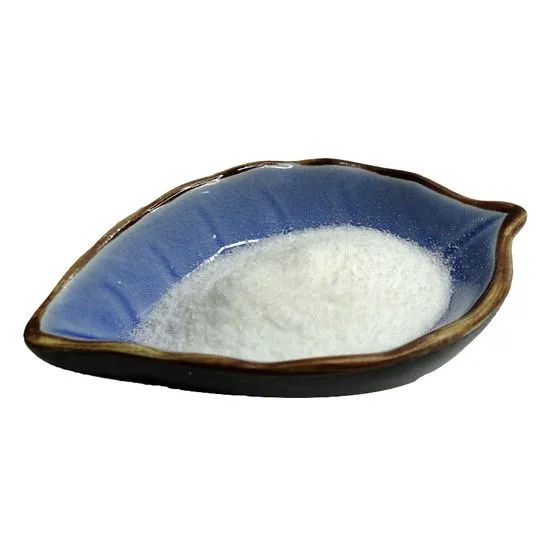What bacteria does fucidin acid powder treat?
Fusidic acid powder is a potent antibiotic that has been widely used to combat various bacterial infections. This article delves into the specific bacteria that fusidic acid powder effectively treats, its mechanisms of action, and its primary medical applications. Whether you're a healthcare professional or simply curious about this powerful antibiotic, read on to discover the remarkable capabilities of fusidic acid powder in fighting bacterial infections.
How Fusidic Acid Powder Fights Staph Infections?
Fusidic acid powder is particularly effective against Staphylococcus aureus, including methicillin-resistant Staphylococcus aureus (MRSA). This makes it a valuable tool in combating staph infections, which can range from mild skin conditions to severe, life-threatening diseases.
The antibiotic works by inhibiting bacterial protein synthesis. It binds to the bacterial elongation factor G (EF-G), preventing the release of the factor from the ribosome. This halts the growth and reproduction of the bacteria, ultimately leading to their death or making them more susceptible to the body's immune system.
Fusidic acid's effectiveness against staph infections is particularly noteworthy in cases where other antibiotics may be ineffective due to bacterial resistance. Its unique mechanism of action means that it can often overcome resistance mechanisms that render other antibiotics useless against certain strains of S. aureus.

In topical applications, fusidic acid powder can be used to treat skin and soft tissue infections caused by staph bacteria. These may include:
- Impetigo
- Folliculitis
- Furuncles (boils)
- Infected eczema
- Infected wounds or burns
When administered systemically, fusidic acid can also be effective against more severe staph infections, such as:
- Osteomyelitis (bone infection)
- Septic arthritis
- Endocarditis
- Bacteremia (blood infection)
Top Medical Uses for Fusidic Acid in Powder Form
While fusidic acid powder is primarily known for its efficacy against staph infections, its uses extend beyond this single type of bacteria. Here are some of the top medical applications for fusidic acid in powder form:
Skin and Soft Tissue Infections
Fusidic acid powder is commonly used in the treatment of various skin and soft tissue infections. It can be applied topically as a cream, ointment, or gel. Some conditions it's used to treat include:
- Cellulitis
- Erysipelas
- Infected atopic dermatitis
- Infected psoriasis
- Minor wounds and burns
Eye Infections
Fusidic acid is also available as eye drops for treating bacterial eye infections. It's particularly effective against:
- Conjunctivitis (pink eye)
- Blepharitis (inflammation of the eyelids)
- Styes
Bone and Joint Infections
Due to its ability to penetrate bone tissue, fusidic acid and fusidic acid powder is often used in the treatment of bone and joint infections, such as:
- Osteomyelitis
- Septic arthritis
- Prosthetic joint infections
Systemic Infections
In more severe cases, fusidic acid can be administered orally or intravenously to treat systemic infections, including:
- Bacteremia
- Endocarditis
- Pneumonia
MRSA Infections
Fusidic acid's effectiveness against methicillin-resistant Staphylococcus aureus (MRSA) makes it a valuable tool in combating these difficult-to-treat infections. It's often used in combination with other antibiotics to prevent the development of resistance.
Fusidic Acid Powder: Spectrum of Antibacterial Action
While fusidic acid is primarily known for its effectiveness against Staphylococcus aureus, its spectrum of antibacterial action extends beyond this single species. Understanding the range of bacteria that fusidic acid can combat is crucial for its appropriate use in clinical settings.
Gram-Positive Bacteria
Fusidic acid is most effective against gram-positive bacteria. In addition to S. aureus, it shows activity against:
- Streptococcus species (including S. pyogenes and S. pneumoniae)
- Corynebacterium species
- Clostridium species
- Propionibacterium acnes
Its effectiveness against these bacteria makes it useful in treating a wide range of infections, from skin conditions to more severe systemic infections.
Gram-Negative Bacteria
Fusidic acid has limited activity against gram-negative bacteria. However, it does show some effectiveness against certain species, including:
- Neisseria species (including N. gonorrhoeae and N. meningitidis)
- Moraxella catarrhalis
- Legionella pneumophila
While not as broad in its gram-negative coverage as some other antibiotics, fusidic acid's activity against these species can be clinically relevant in certain situations.
Anaerobic Bacteria
Fusidic acid also demonstrates activity against some anaerobic bacteria, including:
- Clostridium difficile
- Propionibacterium species
- Peptostreptococcus species
This activity against anaerobes enhances its utility in treating certain types of infections, particularly those involving mixed bacterial populations.
Mycobacteria
Interestingly, fusidic acid has shown some activity against certain mycobacterial species, including:
- Mycobacterium leprae (the causative agent of leprosy)
- Some atypical mycobacteria
While not typically used as a first-line treatment for mycobacterial infections, this activity could potentially be exploited in certain clinical scenarios or in the development of new treatment strategies.
Resistant Strains
One of the most valuable aspects of fusidic acid powder and fusidic acid's spectrum of action is its effectiveness against certain antibiotic-resistant strains, particularly:
- Methicillin-resistant Staphylococcus aureus (MRSA)
- Vancomycin-intermediate Staphylococcus aureus (VISA)
This effectiveness against resistant strains makes fusidic acid a crucial tool in the fight against antibiotic-resistant infections, which are becoming an increasingly serious global health concern.
Conclusion
Fusidic acid powder is a potent antibiotic with a unique mechanism of action that makes it particularly effective against Staphylococcus aureus, including resistant strains like MRSA. Its spectrum of activity also includes other gram-positive bacteria, some gram-negative species, and certain anaerobes and mycobacteria.
The versatility of fusidic acid makes it a valuable tool in treating a wide range of bacterial infections, from skin and soft tissue infections to more severe systemic infections. Its ability to penetrate bone tissue also makes it useful in treating bone and joint infections.
However, like all antibiotics, fusidic acid should be used judiciously to prevent the development of resistance. It's typically most effective when used in combination with other antibiotics, particularly for more severe infections.
As research continues, we may discover even more applications for this powerful antibiotic. If you're interested in learning more about fusidic acid powder or other plant extracts, please don't hesitate to contact us at emily@jiubaiyuanbiotech.com. Our team of experts is always ready to answer your questions and provide you with high-quality products to meet your needs.
References
1. Turnidge, J. (2017). Fusidic acid pharmacology, pharmacokinetics and pharmacodynamics. International Journal of Antimicrobial Agents, 48(6), 607-613.
2. Farrell, D. J., Castanheira, M., & Chopra, I. (2011). Characterization of Global Patterns and the Genetics of Fusidic Acid Resistance. Clinical Infectious Diseases, 52(suppl_7), S487-S492.
3. Howden, B. P., & Grayson, M. L. (2006). Dumb and dumber—The potential waste of a useful antistaphylococcal agent: emerging fusidic acid resistance in Staphylococcus aureus. Clinical Infectious Diseases, 42(3), 394-400.
4. Dobie, D., & Gray, J. (2004). Fusidic acid resistance in Staphylococcus aureus. Archives of Disease in Childhood, 89(1), 74-77.
5. Whitby, M. (1999). Fusidic acid in the treatment of methicillin-resistant Staphylococcus aureus. International Journal of Antimicrobial Agents, 12, S67-S71.
